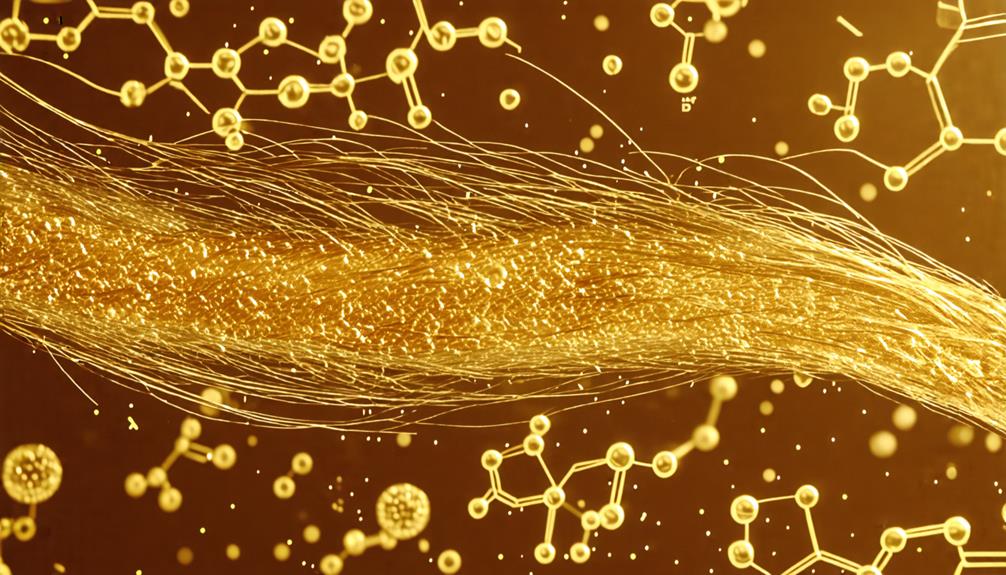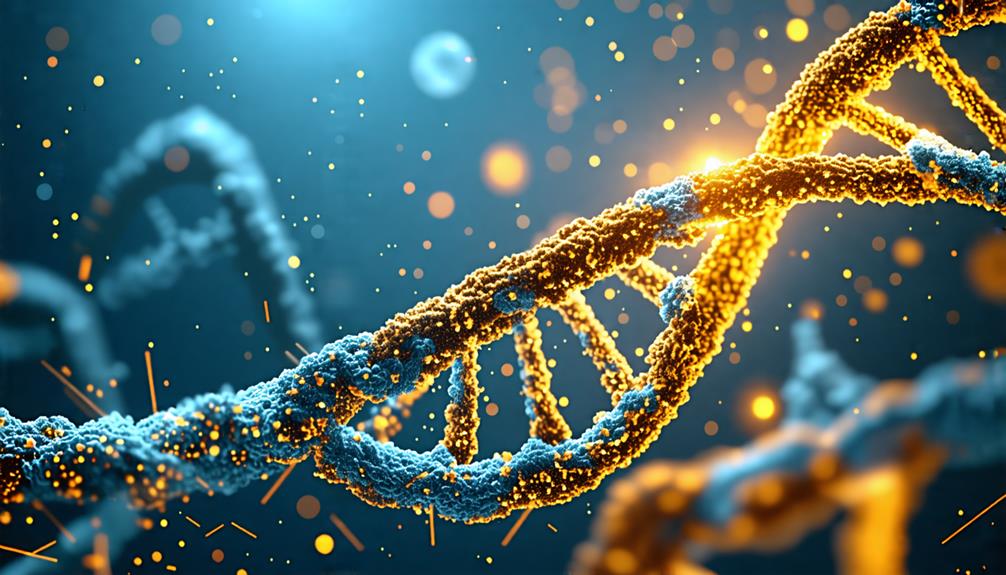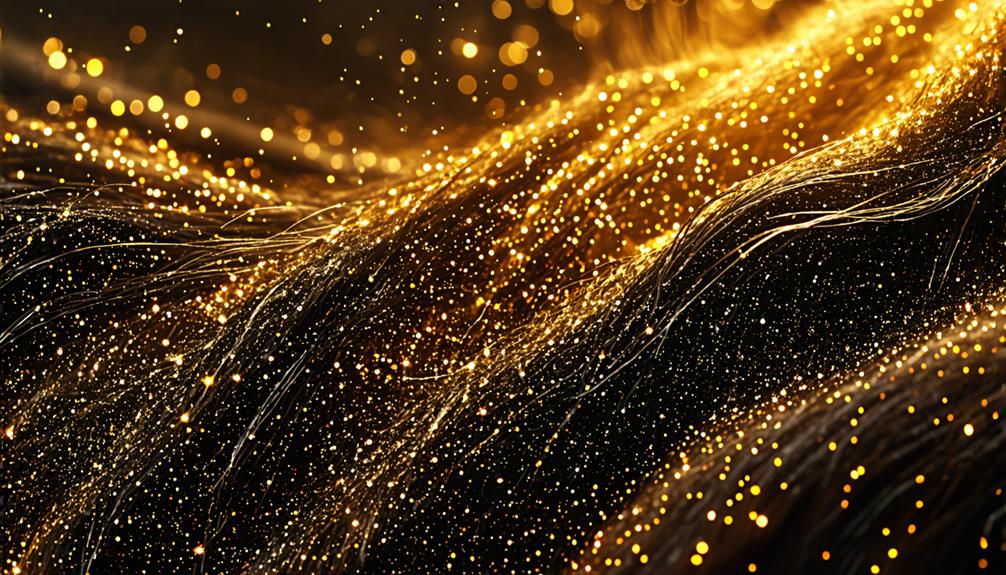You might be surprised to learn that you're carrying around a tiny treasure trove on your head. Human hair contains trace amounts of gold, typically around 0.03 parts per million. This fascinating discovery isn't just a quirky fact; it's a window into your body's long-term metal accumulation and environmental exposure. The gold in your locks can reveal insights about your diet, geographic location, and even potential health concerns. As scientists continue to explore this phenomenon, they're uncovering new possibilities for non-invasive testing and monitoring. What other secrets might your hair be hiding, and how could this knowledge impact future medical and environmental research?
Key Takeaways
- Human hair contains an average concentration of 0.03 parts per million of gold.
- Gold in hair comes from dietary intake and environmental exposure, with hair acting as a natural repository.
- Hair gold content varies based on factors like age, gender, diet, and geographic location.
- Environmental influences, including soil composition and water sources, affect hair gold levels.
The Science Behind Hair Gold

Surprisingly, your hair may be harboring tiny traces of gold, with scientific research revealing an average concentration of 0.03 parts per million in human locks. Your body absorbs this precious metal through dietary intake and environmental exposure, leading to its accumulation in your hair.
As a natural repository for metals, your hair reflects long-term exposure to elements like gold, making it a valuable tool in forensic science.
The concentration of gold in your hair can vary based on factors such as your age, gender, diet, and where you live. Notably, children may have higher levels due to gold content in breast milk.
Hair analysis helps toxicologists detect metal exposure, providing insights into your environmental and dietary history. This scientific approach allows researchers to understand how your body interacts with trace amounts of gold and other metals.
Environmental Factors and Gold Content
Your hair's gold content is particularly influenced by the environment you live in, with factors like soil composition and water sources playing important roles.
The concentration of gold in human hair varies considerably based on your exposure to gold-rich areas and environmental factors. Lifestyle and dietary choices also impact the presence of this precious metal in your locks. Environmental pollution and heavy metal exposure can affect how your hair accumulates trace elements, including gold.
Studies have shown that your hair can retain gold nanoparticles, with concentrations often reflecting your location and surrounding ecosystem.
While the average gold concentration in human hair is approximately 0.03 parts per million, your personal levels may fluctuate depending on your exposure to natural and human-made sources.
Understanding these environmental factors can provide insights into how gold and other trace elements accumulate in your hair over time.
Implications for Health and Research

While environmental factors play a significant role in your hair's gold content, the presence of this precious metal in human hair has far-reaching implications for both health research and medical diagnostics.
Your hair contains traces of gold, typically around 0.03 parts per million, which can provide valuable insights into your long-term exposure to environmental sources and dietary intake.
Curiously, babies under three months have higher levels of gold in their hair, primarily due to breast milk.
This information can be essential for health research, as it offers a non-invasive method to monitor metal levels in your body.
The variability in gold content between younger and older people can help researchers understand how age affects metal absorption and retention.
Ultimately, analyzing the gold in your hair may contribute to advancements in understanding metal toxicity and nutritional deficiencies.
Conclusion
You've learned that your hair holds tiny amounts of gold, reflecting your diet and environment.
It's a fascinating glimpse into your body's long-term metal accumulation.
While you can't get rich from your golden locks, this discovery has important implications for health research.
Remember, your hair's gold content can vary based on factors like age and location.
Scientists are using this knowledge to develop new ways of monitoring metal exposure and nutritional status.

Leave a Reply